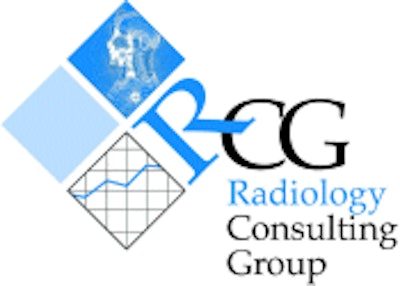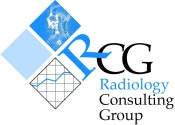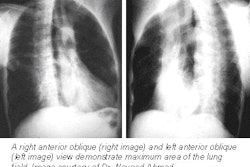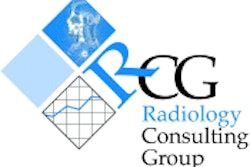
The following is one in a monthly series of practice management articles contributed by the Radiology Consulting Group in Boston. The ongoing series addresses topics and issues of concern to radiology administrators and business managers.
By Denise S. Palumbo, RN
Radiology Consulting Group

Implementing a patient safety program requires management to take a proactive role in setting priorities, and responding to trends in patient care. This article offers guidance in the key steps related to planning, education and reporting that are required to jump-start a patient safety program.
The strategic planning process enables the healthcare provider to demonstrate a commitment to patient safety, and imprint a culture of safety in the radiology department and practice. The strategic plan must include the FTE requirement, as well as financial support for education/training. While improving safety is everyone's responsibility, a safety program can't work as an add-on to employees' already-hectic schedules.
First, a designated leader is critical. Creating a Patient Safety Officer (PSO) position is also an effective strategy for moving the safety plan forward and creating change quickly. The PSO has formal responsibility in partnership with clinical leadership for the investigation of all adverse events. This individual also reports findings, creates action plans for change, and measures the effectiveness of all safety procedures. The PSO's functions are carefully integrated into established quality assurance programs to ensure continuity in the department and in the institution.
On another level, patient safety means empowering staff with the knowledge needed to perform at the highest level possible. For this reason, competency-based training is an important component of safe clinical care. All clinical staff, including staff radiologists, residents, technologists, nurses and support staff, should receive standardized training in their area of specialty. Competency-based training should evolve continually, enabling staff to continuously acquire new skills as the standardized program itself evolves to meet changing needs. Competency training should also include PACS, voice recognition dictation and any other technological advancements that impact patient care. Training should be documented, and evaluated annually in performance reviews. Competency- based evaluations are quantifiable measures that can also help build a culture of patient safety.
Patient safety education also gives managers the expertise they need to participate in the safety culture. Managers can benefit from education in a systems approach to the concepts of why errors occur, as well as exposure to successful safety programs in other industries. This education can also include participating in an actual investigation of adverse events. Establishing such a framework of analysis and cause is critical to ensuring that a thorough investigation is performed, and systems are changed to prevent an adverse event from happening again. It’s simply one of the best ways to learn.
Identifying a framework for comprehensively analyzing and identifying the contributing causes of an event can help guide its investigation. It also ensures that appropriate solutions are systematically addressed to eliminate or minimize the risk of repeat occurrences. The three areas of focus for this framework (which can be modified to address specific high-risk areas in any radiology department) include the care process, caregivers, and the physical environment.
Three components comprise the care process: patient assessment, plan of care, and medication. The care process includes the review of the documented clinical work up of the patient, plan of care identified to include informed consent, and the timely and proper administering of medications.
Today, evaluating caregivers is especially important due to the national shortage of technologists, radiologists, and nurses throughout the country. Caregivers should be evaluated according to human resource issues, human factors, and communication issues. Human resource issues include adequate staffing, appropriate training, staff access to management, and the implementation of standard policies and procedures. Human factors include fatigue, stress, and the emotional state of caregivers. Finally, barriers to communication that exist within the healthcare team must be identified.
The final safety component is the environment. It includes information management issues, equipment, technology, and the physical plant. A review of the environment includes the availability of clinical data, and how it is communicated to the team. PACS and voice recognition dictation must be evaluated according to the actual transfer of digital images and reports, and the training of staff to use these technologies effectively. A review of the physical environment includes areas and equipment used to perform clinical care. Equipment-related issues such as up-time, service records, and preventive maintenance records are also important.
Patient safety is a serious issue that affects the quality of healthcare. Moreover, patients are demanding a response to evidence uncovered in the media, and in medical literature, documenting serious safety issues. In response, radiology departments should lead the way in demonstrating that they can use technology to provide better care, while taking a lead role in patient safety.
Staff members need training to better perform as healthcare providers, and education to better understand the complexities of safe patient care. And management, for its part, must advance the patient safety agenda through formal adverse event reporting mechanisms to identify the contributing causes and systemic solutions. Are you ready to make patient safety a strategic priority?
By Denise S. Palumbo
AuntMinnie.com contributing writer
December 28, 2001
Related Reading
Educational investment pays off in the radiology workplace, November 9, 2001
How to avoid PACS buyer’s remorse, September 27, 2001
Strategic plan allows smooth transition from film library to image service center, August 29, 2001
Site development is key to marketing radiology on the Web, August 9, 2001
e-Radiology enhances marketing opportunities, July 24, 2001
Copyright © 2001 Radiology Consulting Group



















